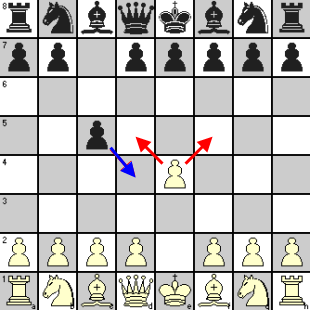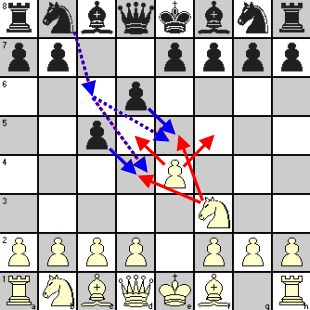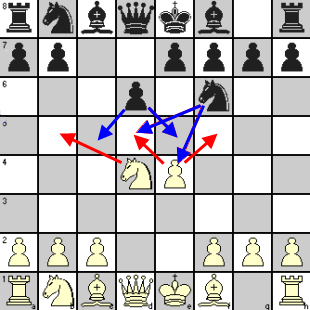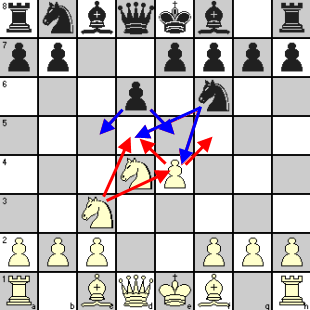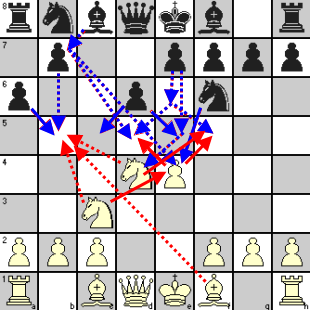In Chess Opening: Control of Center – Part 1, we looked at two popular KP openings to understand how those resolved the tussle between White and Black for control of the center. Here we take a similar look at a common QP opening to realize the chess tactics involved in this case.
Nimzo-Indian Defense
The classical theories on the strategy of chess openings, as formulated by the first undisputed World Champion Wilhelm Steinitz (1836-1900), was further refined by Dr. Siegbert Tarrasch (1862-1934). These stressed the importance of center control by occupation or by direct application of pressure on those squares by using pawns, developing pieces to support that control, and playing to obstruct opponent’s plans in this regard.
It was Aaron Nimzowitsch (1886-1935) who challenged these conventional and fairly universal ideas with his own in My System, which was probably the most widely read book on chess theories. His system found expression in several openings that bear his name, and Nimzo-Indian Defense happens to be the most important among his hypermodern theories and very widely used in master games till today. It appears that the defense was first played in a Rubinstein-Alekhine game at Leningrad in 1914 (won by Black in 28 moves).
What is significant in this opening is that Black does not commit any pawn structure at the start, thus retaining considerable flexibility. Black exerts control on the center indirectly from a distance by use of his pieces and also undermining the influence of enemy pieces on the center.
Let us see how all this is accomplished.
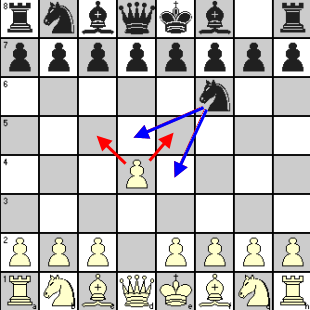 |
||||
| 1. | d4 | Nf6 | White wants to control the central square e5 and semi-central c5. Black applies pressure on d5 and e4 by the Knight (a direct control would need Black to play d5, which normally leads to Queen’s Gambit opening). |
|
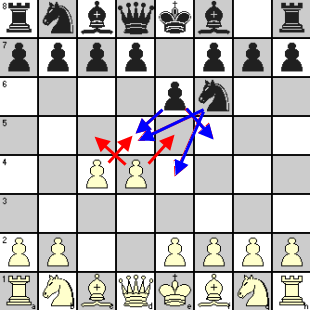 |
||||
| 2. | c4 | e6 | White now counters Black’s pressure on d5 by his pawn move and Black uses his KP to strengthen his hold on d5. |
|
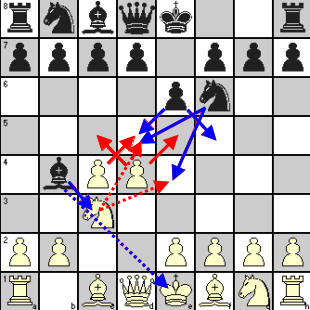 |
||||
| 3. | Nc3 | Bb4 | White develops his QN, adding to the pressure on d5 by his QBP and exerting a measure of control on e4. Black again goes the indirect route to nullify the influence of White QN on d5 and e4 by pinning it. Black also creates the possibility of exchanging his KB with White’s QN, surrendering the advantage of Bishop pair to create a liability of doubled pawn for White on c-file. |
|
In this defense, Black generally puts his QB in fianchetto by playing b6 and Bb7, applying the Bishop’s influence on the long diagonal including the center squares d5 and e4 in harmony with his KN.
If Black exchanges his KB with White’s QN, his strategy will be to close the center to minimize White’s advantage of Bishop pair. You know that an open game gives a great advantage to player having two Bishops and obviously White’s strategy will be to go for such a game.
At this stage, 4. e3, a quiet looking move, is considered to be White’s most potent weapon against Nimzo-Indian Defense. 4. Qc2 (with the idea to retain Bishop pair without doubling of pawn) and 4. a3 (a venturesome continuation and forcing Black’s hand to play 4. … Be7 or 4. … Bxc3) are also playable. Kasparov used 4. Nf3 (a kind of wait-and-watch move) to considerable success against Karpov in their championship match.
To remain within the ambit of our article, we will consider the normal variation only.
| 4. | e3 | 0-0 | White consolidates his QP and goes for development by opening a line for his KB. |
|
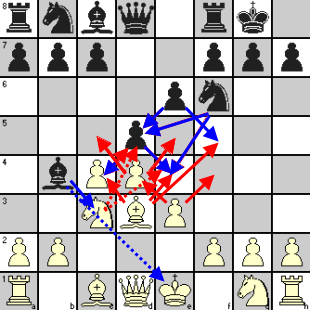 |
||||
| 5. | Bd3 | d5 | White is building up his pressure on e4 and will aim to place his KP there. Black continues with his center control by advancing QP. |
|
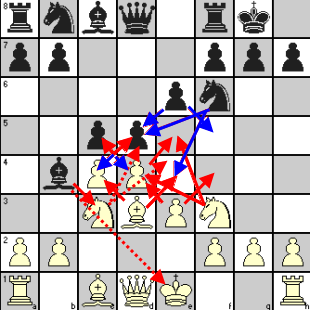 |
||||
| 6. | Nf3 | c5 | White KN increases his control on e5, but Black undermines the pressure by threatening White’s QP with his QBP. |
|
| 7. | 0-0 | White has completed his initial development and in case of doubled pawn due to Black exchanging Bishop with Knight, White can hope to undo it if Black takes his QP. Otherwise White can capture with his Knight to position it centrally. Black does not have any problem in completing his development and his share of center offers many chances of counterplay. | ||
In Chess Opening: Control of Center – Part 3, we will see how the another important QP opening viz. Queen’s Gambit Declined goes about the struggle for the center.
